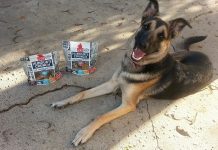Feeding a puppy is a joyful yet responsible task that plays a crucial role in their growth and development. As a new puppy parent, you’re likely eager to provide the best nutrition possible to ensure your furry friend grows into a healthy and happy adult dog. However, even with the best intentions, it’s easy to make feeding mistakes that could inadvertently lead to weight gain. Understanding these common pitfalls will help you nurture your puppy’s health and maintain their ideal weight. In this article, we’ll explore some of the most frequent puppy feeding mistakes and offer practical advice on how to avoid them, so you can give your puppy the balanced diet they deserve.
Choosing the Right Portions to Keep Your Puppy Fit
Understanding how much to feed your puppy is essential for maintaining their health and preventing unnecessary weight gain. Puppies have specific nutritional needs that differ from adult dogs, and feeding them the correct portions is crucial. Here are some tips to ensure you’re feeding your puppy just the right amount:
- Follow Feeding Guidelines: Most dog food brands provide recommended portion sizes on their packaging based on your puppy’s weight and age. Use these as a starting point, but be prepared to adjust based on your puppy’s specific needs.
- Consider Activity Level: More active puppies may require slightly more food, while less active ones may need less. Monitor your puppy’s activity and adjust their portions accordingly.
- Regularly Monitor Weight: Regularly check your puppy’s weight and body condition. If they are gaining too much weight, consider reducing their portion sizes slightly and consult your veterinarian for guidance.
- Use a Measuring Cup: Eyeballing portion sizes can lead to overfeeding. Always use a measuring cup to ensure you’re providing the correct amount of food.
By paying attention to these details, you can help ensure your puppy grows into a healthy and fit adult dog. Remember, a well-balanced diet and appropriate portions are key to your puppy’s long-term well-being.

Understanding Nutritional Labels for Better Puppy Health
When deciphering the complex world of nutritional labels, it’s essential to focus on key elements that impact your puppy’s health. Proper understanding of these labels can prevent common feeding mistakes that often lead to unwanted weight gain. Here are some vital components to consider:
- Caloric Content: Pay attention to the caloric density of the food. Puppies have different energy requirements than adult dogs, and consuming food with too many calories can quickly lead to excess weight.
- Protein and Fat Levels: Look for a balanced ratio of protein and fat. Puppies need high-quality protein to support growth, but excessive fat can lead to rapid weight gain.
- Ingredient Quality: Opt for foods with whole ingredients. Avoid products with fillers like corn or soy, which can add unnecessary calories without nutritional value.
- Portion Guidelines: Follow the feeding guidelines based on your puppy’s age, weight, and breed. Overfeeding, even with high-quality food, is a common mistake that contributes to weight issues.
Understanding these nutritional components ensures you are providing a balanced diet that supports healthy growth without the risk of your puppy becoming overweight. Always consult with your veterinarian to tailor a diet plan that meets the specific needs of your furry friend.

Avoiding High-Calorie Treats and Snacks
While it might be tempting to indulge your puppy with an array of treats and snacks, it’s essential to be mindful of their calorie content. High-calorie treats can quickly add up, contributing to unwanted weight gain in your furry friend. Instead, consider healthier alternatives that keep their diet balanced and nutritious. Opt for low-calorie treats or use pieces of their regular kibble as rewards during training sessions. Not only does this help in maintaining their weight, but it also reinforces positive behaviors without compromising their health.
- Choose treats with natural ingredients and minimal additives.
- Limit the number of treats given each day to prevent excessive calorie intake.
- Incorporate fresh fruits and vegetables like carrots or apples (in moderation) as snacks.
Additionally, be cautious of table scraps, as they often contain ingredients that are not suitable for dogs and can be high in fat. By making these small adjustments, you can ensure that your puppy grows up healthy and energetic, ready to enjoy life’s adventures by your side.

Establishing a Consistent Feeding Routine for Balanced Growth
Creating a reliable meal schedule for your puppy is essential for their healthy development. Puppies thrive on routine, and establishing a regular feeding timetable helps them know when to expect their meals, which in turn aids in digestion and nutrient absorption. Here are a few tips to help maintain a consistent feeding routine:
- Set specific meal times: Feed your puppy at the same times each day to regulate their metabolism and prevent overeating.
- Measure portions accurately: Use a measuring cup to ensure your puppy gets the right amount of food according to their age, size, and breed.
- Limit treats: While treats are a great training tool, overindulgence can lead to weight gain. Keep them to a minimum and consider them part of the daily calorie intake.
Adhering to these guidelines not only supports balanced growth but also fosters a sense of security and stability for your furry friend. Remember, a well-fed puppy is a happy puppy!
















